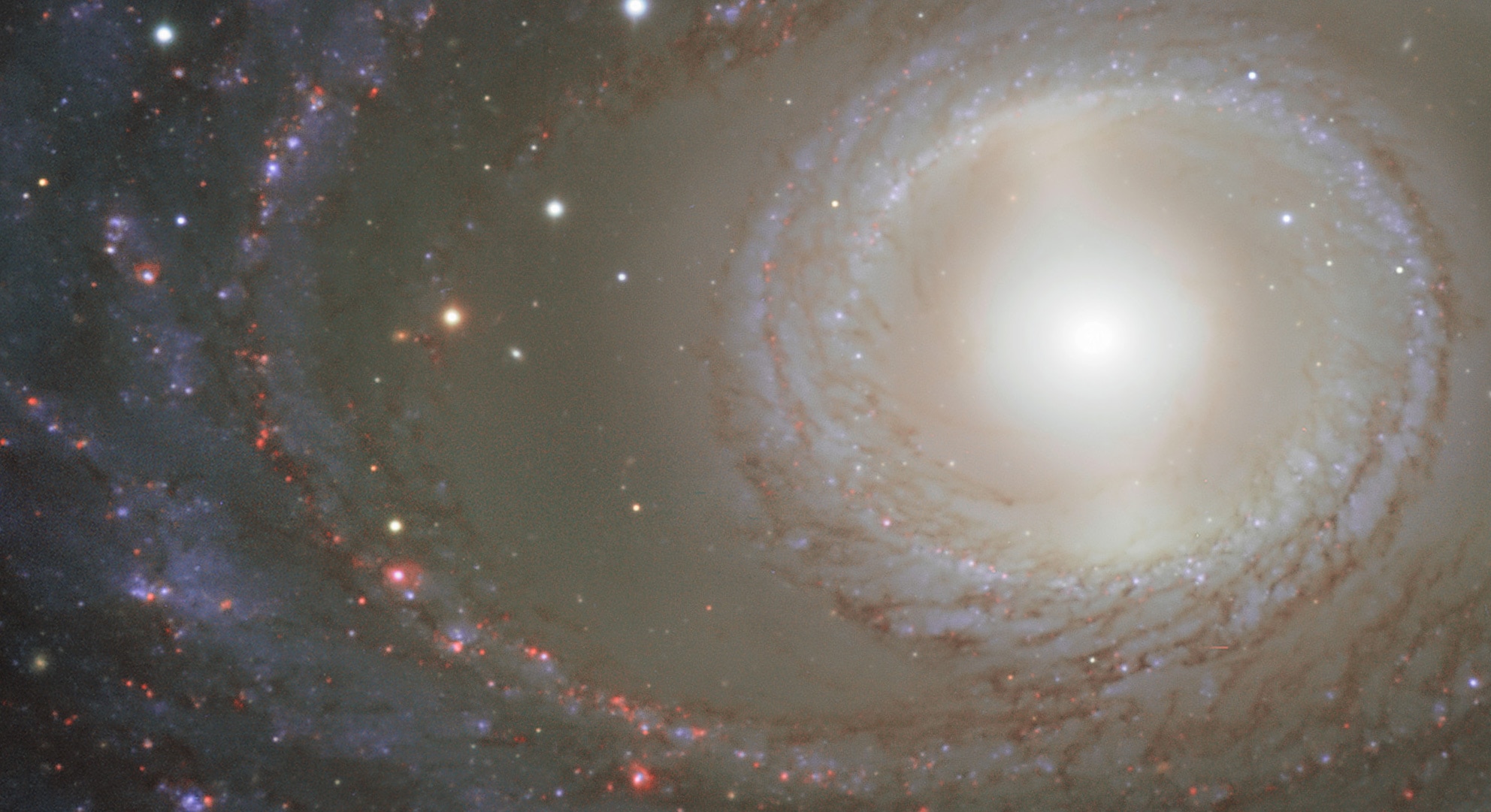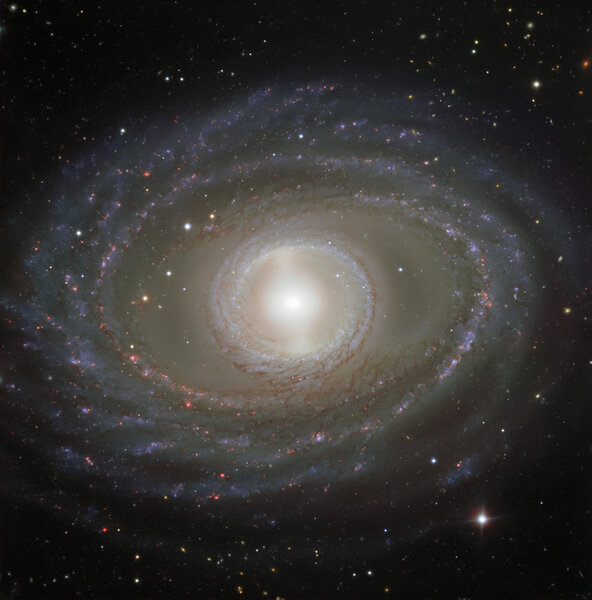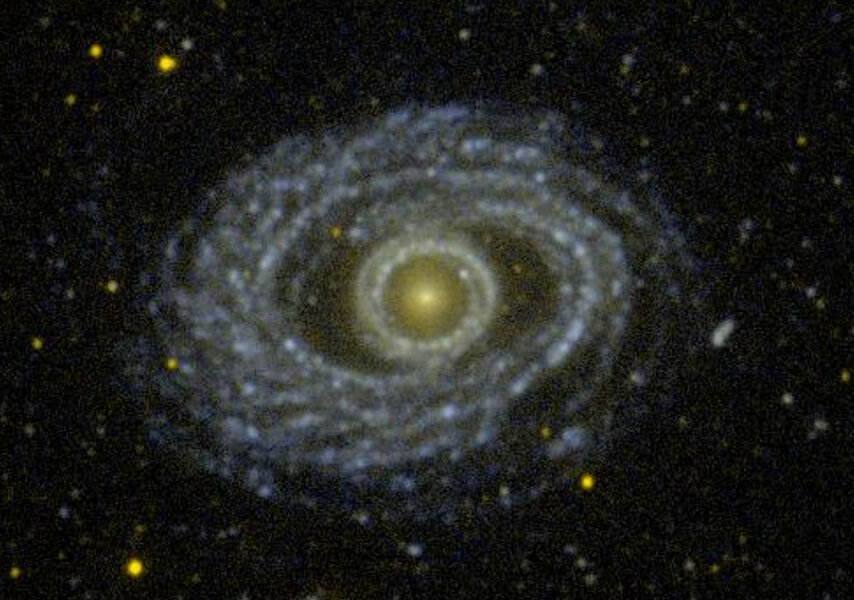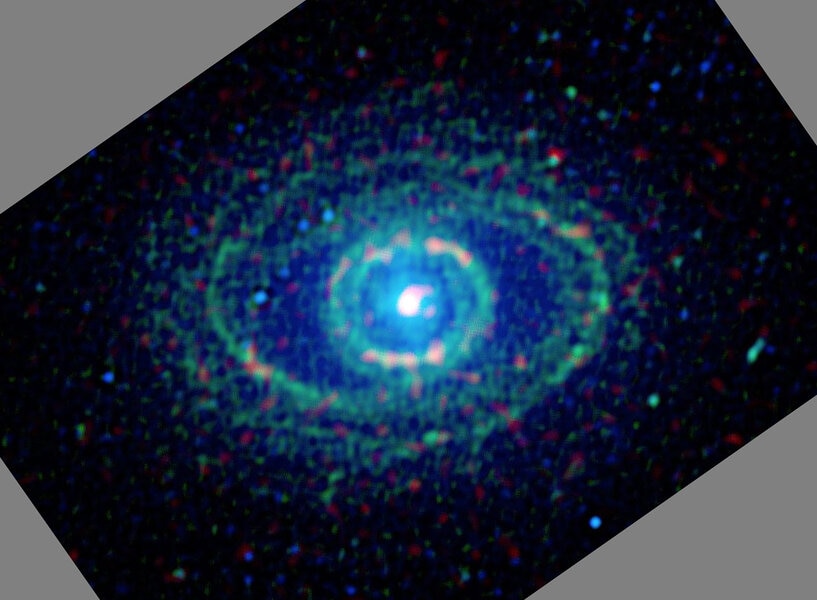Create a free profile to get unlimited access to exclusive videos, sweepstakes, and more!
NGC 1398: An utterly perfect spiral galaxy

It's nice to catch up with old friends sometimes, isn't it? If it's been a while, with the passage of time you see them better — more clearly — and your own experience may give you better insight on them as well.
Oh — now that I write that out I see that this works for humans, too. But I meant it for astronomical objects, specifically galaxies.
Even more specifically I meant NGC 1398, a perfect spiral galaxy about 65 million light-years away in the constellation of Fornax:
Well hello old friend!
I wrote about NGC 1398 a few years ago, when the astronomer (and another old friend!) Adam Block released a gorgeous image of it. Adam used a 0.81-meter telescope in Arizona, and he does amazing work.
In this case, though, the image above was created using the monster 8-meter Very Large Telescope in Chile. The major difference is that a bigger telescope sees fainter features more easily and also produces sharper images, so you can see more detail. The camera used, the FOcal Reducer and low dispersion Spectrograph 2 (also called FORS2), is an extremely sensitive detector that can see a large area of the sky (that's the "focal reducer" part, lowering the telescope's magnification) as well as take spectra, breaking the light up from an object into individual colors to help astronomers analyze it (the "spectrograph" part).
This image is a combination of four filters to create a sort-of natural-looking shot of the galaxy. It uses a red, green, and blue filter to show more or less what the eye sees, plus an extra filter that selects out the light from warm hydrogen, to accentuate gas clouds where stars are born. That's displayed as pink, and you can see these nebulae dotting the spiral arms of the galaxy.
And what spiral arms! They're wound up so tightly that at first glance they look like rings. In fact, poking around the old science journal literature about NGC 1398, I found that for a while astronomers weren't sure just what the structure of this galaxy was; some said the inner arms formed a ring, some said it's not really a ring but that the outer arms form a ring-like structure (called a pseudoring).
This image makes it clear that the inner ring is definitely just a very tightly wound set of arms, and the outer arms don't really form a either (I think the large number of spurs — short arms branching off the main ones — helped confound the astronomers looking at earlier, lower-resolution images).
NGC 1398 is a barred spiral, with that rectangular-shaped feature running across the core and ending at the inner "ring." This is a common feature in spirals — the Milky Way has a big one — and they can affect how the stars and gas move around the galactic center (I describe this in the earlier post on NGC 1398).
Bars are generally made of old stars, which tend to be red; massive, luminous blue stars die young, leaving behind lower-mass redder ones. This means stars haven't formed in the bar in a long, long time. In the spiral arms, stars are constantly being formed in gas clouds, making them appear blue. You can see this in the image, but astronomers also use single-color images, sometimes in wavelengths of light our eyes cannot even detect, to see this more clearly.
For example, check out this ultraviolet image of NGC 1398 taken by the GALEX spacecraft:
Even though GALEX uses a small telescope, look at how sharply defined the arms are! Young stars put out a lot of UV, and these tend to be confined in the arms. The inner "ring" of arms stands out as well, as does the very center of the galaxy (this happens sometimes in barred galaxies, as gas is funneled by the gravity of the stars in the bar toward the galactic center).
Now check out a near-infrared (just outside the color range of the human eye) image taken using the Spitzer Space Telescope:
See how the bar is suddenly much brighter relative to the arms? The bar is old stars, remember, which are redder, so they show up well in this wavelength. The arms are there, but fainter, since there aren't as many older red stars there compared to young blue ones.
But this gets more complicated (or, as scientists like to call it, "fun"): when you look out to even longer infrared wavelengths the arms become bright again. Check out this image from WISE, the Wide-field Infrared Survey Explorer, which I rotated to more or less match the VLT image:
Spiral arms have lots of dust in them: tiny grains of rocky material or long-chain carbon molecules. These block visible light (check out the original VLT image above again; the dust is what creates the lovely filigree patterns in the arms), but if it's warmed by nearby stars it glows in the infrared wavelengths seen by WISE. In those images, the carbon molecules are seen as green (remember, this is light we can't see, so the images taken by WISE are assembled and assigned colors to help us understand them; warm carbon molecules glow at a wavelength of 12 microns [about 20 times the reddest light humans can see], which is displayed as green). The red blobs are dust clouds heated by stars being born, and you can compare them to how they look in other wavelengths in the images above, too.
Galaxies are immense structures, and immensely complex, too. They really are like old friends to astronomers; we've observed them for a long time, but they still constantly surprise us. Using bigger telescopes to investigate them is important, of course, but perhaps even more important is using telescopes that see other light than our eyes can. Only then do the different features stand out, isolating them, so that we can study them and figure out what's what.
I've always loved this idea; it's easy to fall into the trap of thinking that what you are seeing is what you get. You have to look at things in different ways to truly appreciate them, to understand them.
It's a good lesson, and in this case it's literally written across the sky.

















